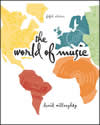Chapter 14 Music of the Twentieth Century Major developments from traditional sounds to the avant-garde: impressionism, serialism, neoclassicism, minimalism, electronic music, and chance music Composers in the twentieth century have produced music that is diverse and complex. Much of it is a product of classical ideals of order and objectivity, a result of a renewed interest in polyphonic texture, or affected by advancements in electronic technology. Composers reflected new ways of thinking about rhythm and timbre. They approached melodic and harmonic writing with considerably expanded notions, often in ways that made traditional terminology of little use in describing their music. They have invented new ways of notating their music. Temporal elements are treated differently than in the past; sound events might be measured in time segments rather than measures or phrases. World music has had significant impact on the thinking and the music of many modern composers. Avant-garde music, the music of the experimentalists, is presented as a necessity of any age for music to progress. The music of today moves ahead, always influenced by experimentation yet typically building on acceptable practices of the past. Stylistic developments are somewhat arbitrarily divided into eight categories, each identified prominently with representative composers, such as Debussy with impressionism; Stravinsky with
neoclassicism; Schoenberg with serialism. Nationalism emerged in nineteenth-century classical music of Europe, Mexico and Latin America, and is seen again in the next chapter on American classical music. Electronic music, including computer music, is traced from its mid-century beginnings, noting the pioneers Varèse, Babbitt, and Subotnik. Chance music and Cage are discussed briefly. Totally controlled music is discussed as an advanced form of serial technique and as applicable to the process of electronic music composition. Minimalism is treated as an important development whose impact on the history of western music is as yet inconclusive. A number of fine modern composers, including Barber, Prokofiev, Vaughan Williams, Copland, and Villa Lobos, have elected to create in a traditional language, in a tuneful, accessible style, producing sounds with which many listeners can identify and would find comfortable. The importance of these composers is recognized in their desire to find a balance between innovation and acceptance. Goals for Listening - Develop understanding of texture and timbre
- Identify assymetrical rhythm and phrasing polytonality
- Recognize tone clusters: three or more adjacent tones (no tones in between) sounding simultaneously.
| 


 2003 McGraw-Hill Higher Education
2003 McGraw-Hill Higher Education